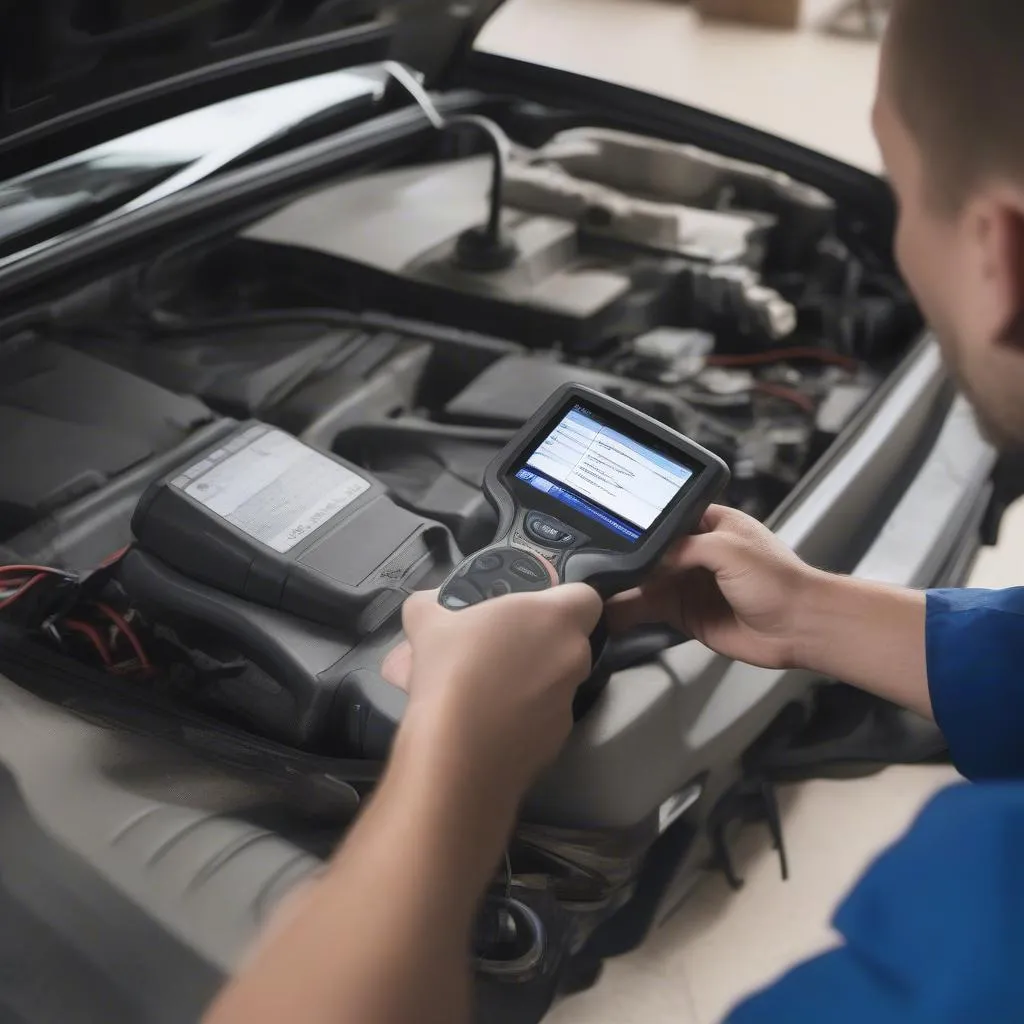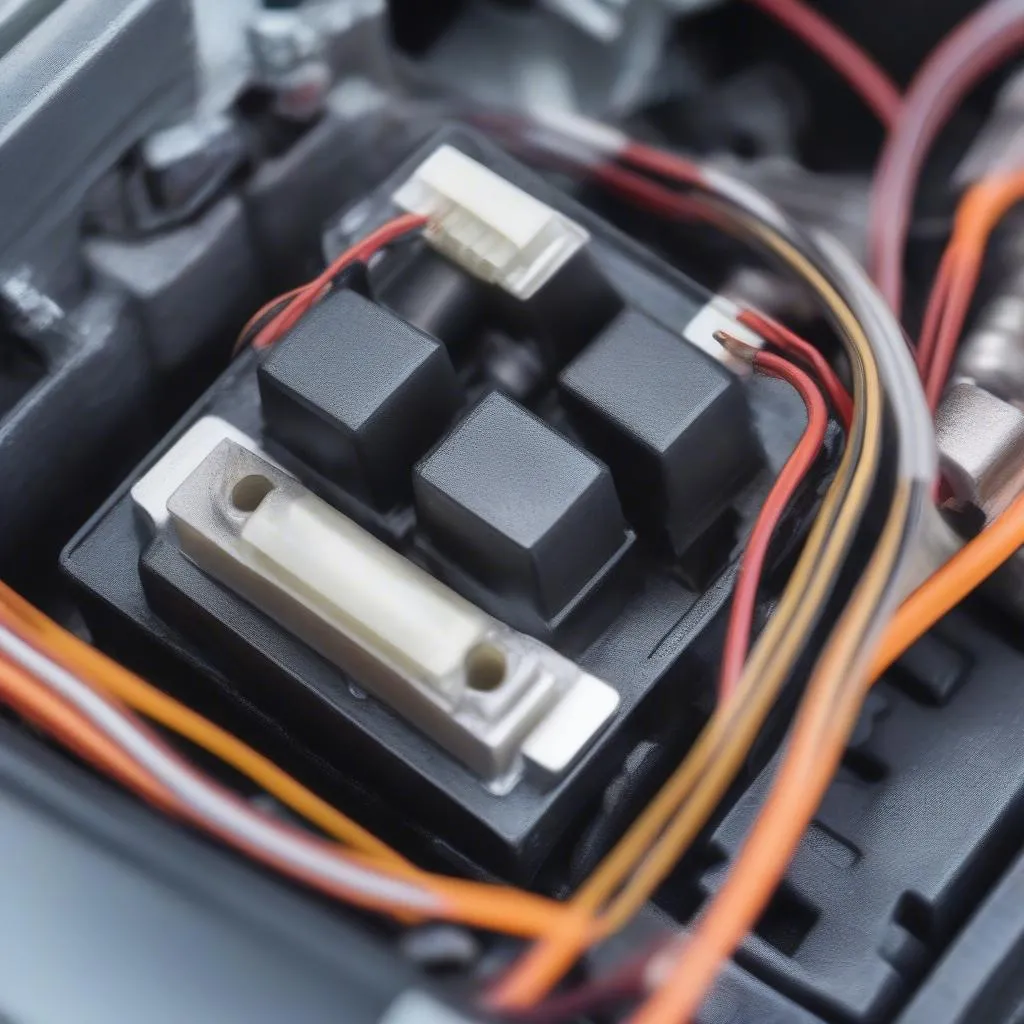Ever felt like your car was down on power, guzzling gas like it’s going out of style, or just acting plain weird? I’m talking rough idling in LA traffic or stalling at a green light on Broadway. You, my friend, might be dealing with a faulty Mass Air Flow (MAF) sensor.
Now, before you panic and envision a hefty repair bill, take a deep breath. We’re diving deep into the world of MAF sensors and how to test them using a scan tool. With this guide, you’ll be armed with the knowledge to diagnose the issue and maybe even save yourself a trip to the mechanic.
Decoding the Mystery of the MAF Sensor: Why It Matters
Before we jump into the ‘how-to’, let’s understand why this little sensor is such a big deal. In simple terms, the MAF sensor is like your car’s lungs. It measures the amount of air entering the engine, which is crucial for determining the right amount of fuel to inject. A faulty MAF sensor can throw this delicate balance off, leading to:
- Reduced Engine Power: Imagine trying to run a marathon while breathing through a straw. That’s what it’s like for your engine with a bad MAF sensor.
- Poor Fuel Economy: When your engine isn’t getting the right air-fuel mixture, it compensates by burning more fuel, hitting your wallet where it hurts.
- Rough Idling: Remember that annoying shaking at a red light? Yeah, a faulty MAF sensor can be the culprit.
- Check Engine Light: This one’s a no-brainer. A problematic MAF sensor will often trigger your check engine light.
As a seasoned mechanic, I’ve seen countless cars with MAF sensor issues, from a beat-up Ford F-150 in Texas to a sleek Mercedes-Benz E-Class cruising down the Autobahn in Germany. It’s a common problem across all makes and models.
Unmasking the Culprit: Testing your MAF Sensor with a Scan Tool
Now, let’s talk about how to test your MAF sensor with a scan tool, a handy device that lets you communicate with your car’s computer. Here’s a step-by-step guide:
- Safety First! Before you begin, make sure your car is parked on a level surface, the engine is off, and the parking brake is engaged.
- Connect Your Scan Tool: Locate your car’s OBD-II port (usually under the dashboard on the driver’s side) and connect your scan tool.
- Turn the Ignition On: Turn your car’s ignition to the “on” position but don’t start the engine.
- Access Live Data: Using your scan tool, navigate to the “live data” or “data stream” section. This is where the magic happens.
- Locate MAF Sensor Readings: Look for parameters related to the MAF sensor. Common ones include “MAF Sensor Voltage,” “MAF Sensor Grams/Second,” or simply “MAF.”
- Start the Engine: With the engine running, observe the MAF sensor readings on your scan tool.
- Analyze the Readings: Compare the readings to the manufacturer’s specifications. You can find these in your car’s repair manual or online.
Key Things to Look For:
- Low MAF Sensor Voltage: This could indicate a wiring problem, a faulty sensor, or a vacuum leak.
- Fluctuating or Erratic Readings: Unstable readings often point to a failing MAF sensor.
- Readings That Don’t Change: If the MAF sensor readings stay constant even when you rev the engine, the sensor is likely faulty.
Here’s what a scan tool might look like:
 scan_tool
scan_tool
FAQs: Answering Your Burning Questions
Q: Can I clean my MAF sensor?
A: Yes, cleaning your MAF sensor with a specialized cleaner can sometimes resolve issues. However, if it’s severely damaged or the readings are way off, replacement is your best bet.
Q: What if I replace the MAF sensor and the problem persists?
A: If you’ve replaced the MAF sensor and the problem hasn’t gone away, there might be an underlying issue, such as a vacuum leak or a wiring problem. In such cases, it’s best to consult a qualified mechanic.
Q: Can a bad MAF sensor damage my engine?
A: While a faulty MAF sensor won’t directly damage your engine, prolonged driving with an incorrect air-fuel mixture can lead to problems with your catalytic converter, which can be an expensive fix.
Need More Help with Your Car’s Diagnostics?
Diagnosing car problems can be tricky, but it doesn’t have to be a frustrating experience. If you’re unsure about any step of the process or need further assistance, our team of auto repair experts is just a message away. Contact us on WhatsApp at +84767531508 for 24/7 support. We’re here to help you get back on the road with confidence!
Exploring Other Avenues: Related Issues and Solutions
A faulty MAF sensor isn’t the only thing that can cause your car to act up. Here are some other issues that might present similar symptoms:
- Vacuum Leaks: A leak in the intake manifold or vacuum hoses can disrupt airflow readings, leading to similar problems as a bad MAF sensor. You can check out our article on how to determine a vacuum leak with a scan tool for more information.
- Throttle Position Sensor (TPS) Problems: The TPS tells your car’s computer how far you’re pressing the gas pedal. A faulty TPS can cause acceleration issues and other performance problems. Learn more about testing your throttle sensor with a scan tool in our detailed guide.
- Oxygen Sensor Malfunction: Oxygen sensors monitor the amount of oxygen in your car’s exhaust, helping to regulate the air-fuel mixture. A faulty oxygen sensor can cause similar symptoms as a bad MAF sensor.
And here’s what a MAF sensor itself might look like:
 mass_air_flow_sensor
mass_air_flow_sensor
Empowering You with Knowledge: Take Control of Your Car’s Health
Understanding how to test your MAF sensor with a scan tool can be incredibly empowering. It allows you to take control of your car’s health, diagnose potential problems early on, and potentially save yourself time and money.
Remember, knowledge is power when it comes to car maintenance. By staying informed and proactive, you can keep your car running smoothly for miles to come. Happy driving!


